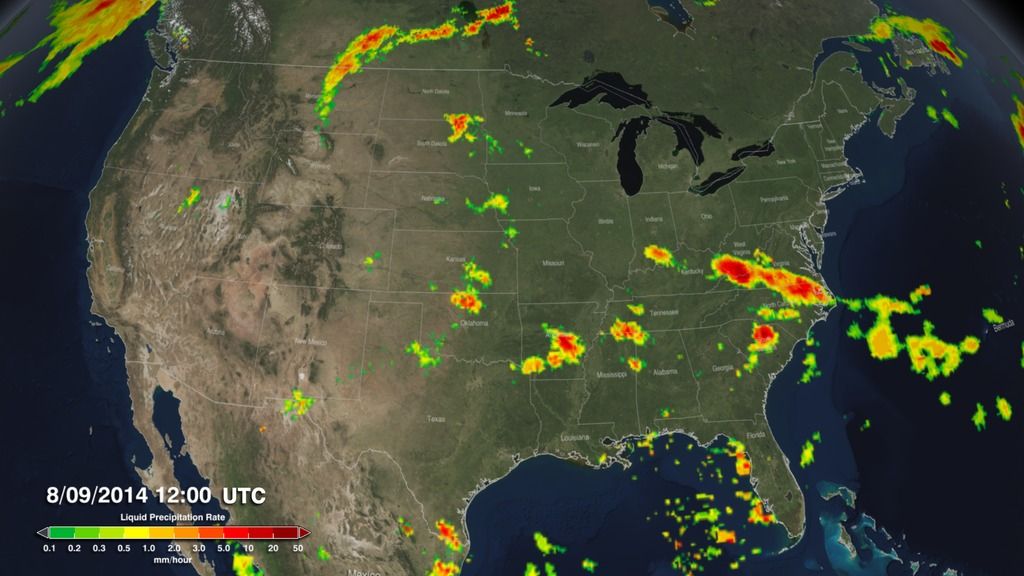Global Rain and Snow Swirl Across Stunning New Maps

Stunning new global maps from NASA show exactly how much rain and snow pummel the Earth.
The maps released today (April 1) are the latest results from the Global Precipitation Measurement (GPM) mission, which was launched more than a year ago, on Feb. 27, 2014.
"This is the first global view we've ever had of the global water cycle," said George Huffman, a research meteorologist at NASA's Goddard Space Flight Center in Greenbelt, Maryland.
The GPM mission relies on a network of 12 satellites. On the GPM Core Observatory satellite, a radar instrument peers through clouds to snap 3D images of precipitation, and readings from a microwave radiometer gauge precipitation intensity.
The satellite network means that forecasters can now track storm fronts in remote areas such as the Southern Ocean and see snow form at the top of tall hurricane clouds for the first time, Huffman told Live Science. "The Southern Ocean is really the last great terra incognita of Earth," Huffman said. [Earth from Above: 101 Stunning Images from Orbit]
Some of the new rain and snow images released today highlight severe weather events of the past year, such as Hurricane Bertha moving off the East Coast in August 2014. Bands of intense tropical storms swirled across the South Pacific during the same time period.
More recently, the GPM satellites also spied Super Typhoon Maysak pelting the sea with 2.8 inches (7 centimeters) of rain per hour in the northwestern Pacific Ocean this week.
Sign up for the Live Science daily newsletter now
Get the world’s most fascinating discoveries delivered straight to your inbox.
Beyond storm tracking, researchers also intend to combine the new rain and snow coverage with information from other Earth-observing satellites to provide a more comprehensive view of the planet's water cycle, Huffman said. "It's critically important to know where and when and how much precipitation is falling around the world," he said.
The joint mission with the Japan Aerospace Exploration Agency cost NASA $933 million to build and launch.
Follow Becky Oskin @beckyoskin. Follow Live Science @livescience, Facebook & Google+. Originally published on Live Science.












